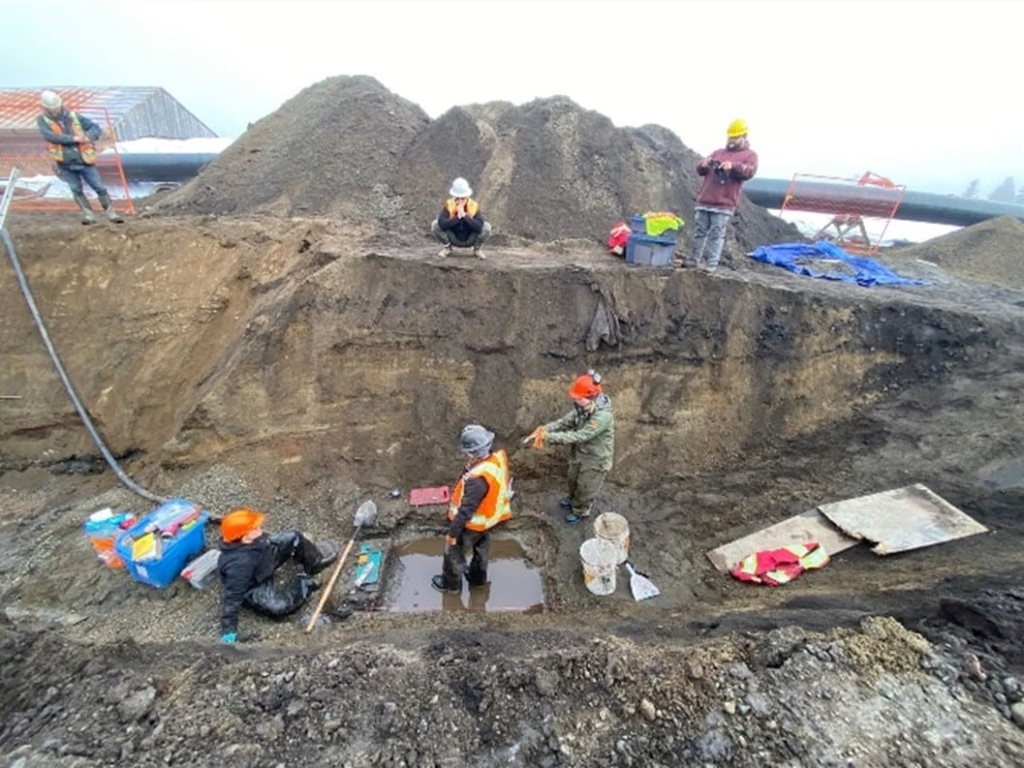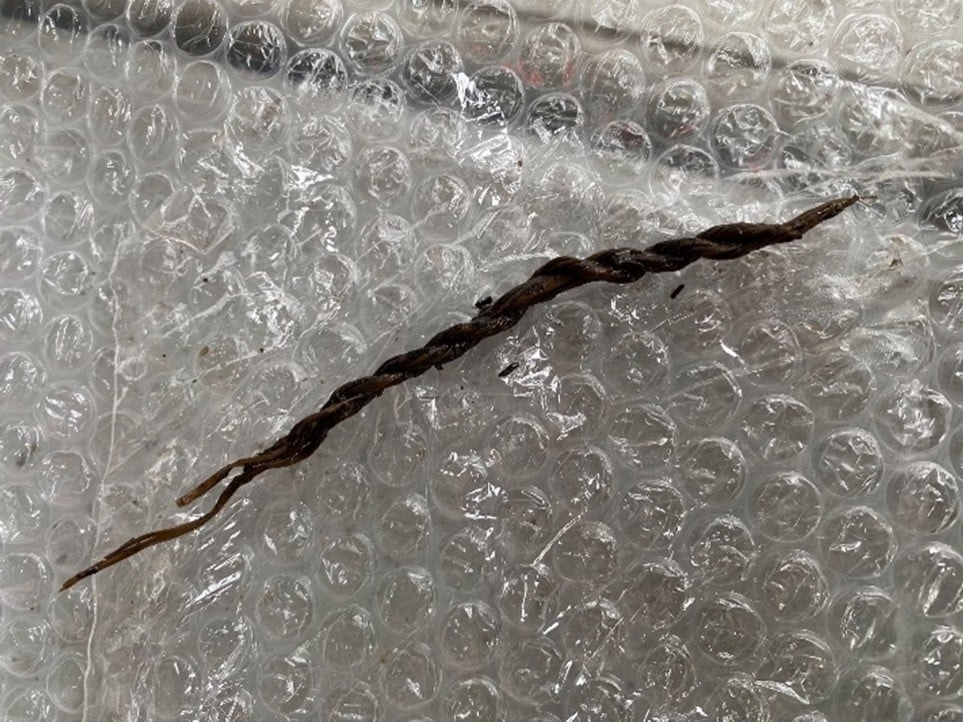A remarkable archaeological discovery has surfaced near Courtenay, British Columbia, where a 3,800-year-old wooden wedge and other organic artifacts were unearthed during a regional sewer infrastructure project.
The find was made at a rare archaeological “wet site,” a type of location where high moisture levels and limited oxygen preserve fragile organic materials that usually decay over time. These conditions allow for the preservation of items such as wood, leather, plant fibers, and fishing nets — offering a rare window into daily life thousands of years ago.
The site was discovered just off Farmview Road during the Comox Valley Regional District’s (CVRD) Sewer Conveyance Project.

Everyday Tools from the Distant Past
Archaeologists recovered several wooden wedges, believed to be used to split logs into planks for house construction or other practical uses. The tools were made from fine-grained woods like yew, maple, or spruce and were scorched to enhance durability. Some featured protective cordage collars to prevent damage during use — a testament to the craftsmanship of early peoples.
Also found were examples of ancient cordage, or rope-like materials made from wood or plant fibers. These were used for fishing, hunting, harvesting, carpentry, clothing, and basketry.
“By studying cordage, we can identify the plant species and technologies our ancestors used,” said the K’ómoks First Nation, who oversees cultural research in the area.
Significance of the Wet Site Discovery
The site lies just 30 meters outside of a provincially protected archaeological zone but was still safeguarded under the K’ómoks First Nation’s Cultural Heritage Investigation Permit (CHIP) system. This system ensures nearby heritage sites are not overlooked during development.

“This shows the CHIP system is effectively preserving cultural information that would otherwise be lost,” the Nation stated.
Staff from the Royal BC Museum are also involved in supporting preservation and research efforts at the site.
When Modern Development Meets Ancient History
The discovery occurred in the midst of the CVRD’s major Sewer Conveyance Project, which involves replacing critical sewage infrastructure that handles more than 14,000 cubic meters of raw sewage daily.
This extraordinary find not only enriches our understanding of ancient life on Canada’s West Coast but also highlights the importance of integrating heritage conservation into modern development.
Cover Image Credit: Preserved wooden wedge with cordage found at the Farmview Road archaeological wet site. Photo: K’ómoks First Nation





